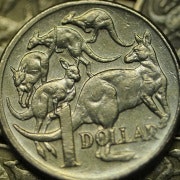How will the US dollar respond to inflation?
If markets behaved in line with theory, which they of course don’t always do, then one would have expected Friday’s positive US economic data to have triggered some upside on the US dollar. Not only was consumer sentiment at its highest since July 2013 but producer prices also reached levels not seen since the same month.
PPI turned around a -0.1 per cent result the previous month to come in at 0.5 per cent, taking the annualised number to 1.4 per cent. The chart below shows how closely linked PPI (supply-side inflation) and CPI (demand-side inflation) are.
Inflation is a non-event for the USD
Sometimes consumer demand drives pricing up forcing higher prices from suppliers (demand-pull inflation). At other times inflation is driven from suppliers (cost push). Now there are arguments on both sides of the debate, but it is pretty clear that US inflation is, for the time being, a non-event for the currency markets.

The currency markets’ inaction in regards to Friday’s data suggests that the Federal Reserve is winning the battle against the market: the battle to temper investors’ expectations around the timing and scale around interest rate rises in North America.
Since Yellen’s “around six months” gaffe last month, the Fed stepped up the 'lower for longer' mantra and it seems it is working.
I don’t expect the market's apathy towards inflation will last too long, though. If consumer-side inflation doesn’t follow producer-side soon, then either investors or policymakers or both will get anxious. It is rather concerning that at a time when the Fed is withdrawing stimulus, inflation is still quite low. The greenback could start to reflect this in coming months to confound the market's expectation and trade lower, not higher.
Could the US become the next Japan?
It is well known that Japan has had low inflation for the better part of the last two to three decades however this is changing as Abenomics starts to get some traction. As is evident by the chart below Japanese inflation (month on month) is not only now higher than the US but it is trending up at a time when North America is moving in the other direction.

The next reading on US economic growth comes at the end of the month. If it doesn’t continue to expand beyond 3.2 per cent then this could become a bigger problem than the market has anticipated. With the Fed winding back QE, it raises the question: how will they target higher inflation if GDP doesn’t continue to grow?
Jim Vrondas is Chief Currency strategist, Asia-Pacific at OzForex, a global provider of online international payment services and a key provider of Forex news. OzForex Group Limited, is a publicly listed entity with shares traded on the Australian Securities Exchange under the code "OFX".















